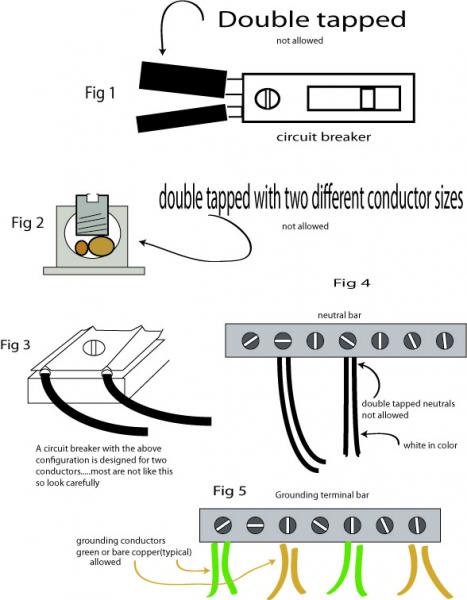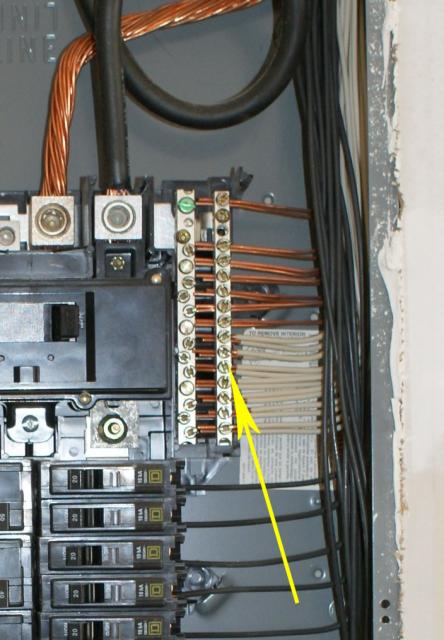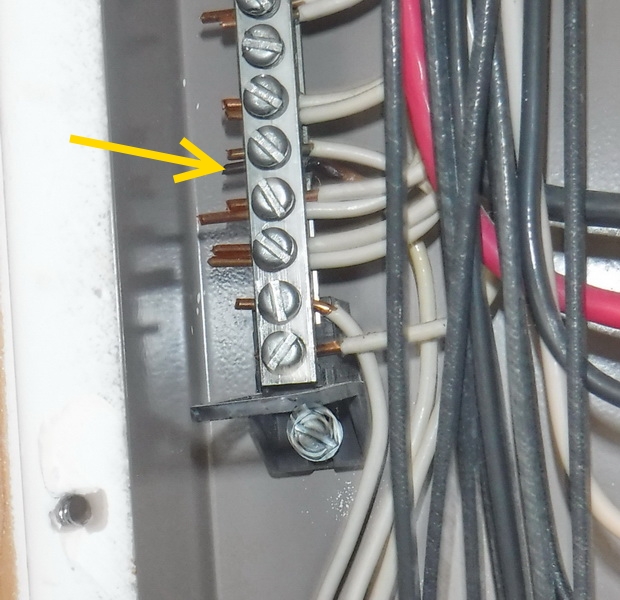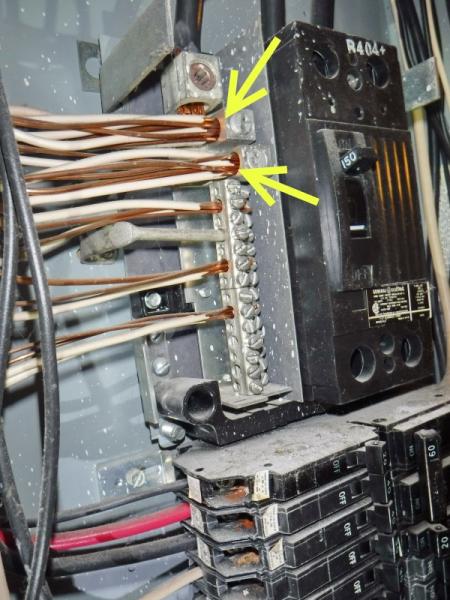- Home - Blue Palmetto Home Inspection of Summerville and Charleston
- Learn About Us and This Charleston Home Inspector
- What's Inspected
- Charleston Lowcountry Inspection Areas (geographic)
- Testimonials
- >>>Blogs (educational)
- Sample Reports & Documents
- Why Get a Home Inspection Report
- Charleston's Top Ten Reasons
- Home Inspector Photo Galleries
- Pricing
- Scheduling and Customer Information
- Home Inspection Authorization Contract
- General Scope of Work (electronic)
- Home Inspection Customer Satisfaction Survey
- Privacy Policy
- Full site
- The Roof Framers Field Manual
What is a double tap?
Submitted by Ray Thornburg on Wed, 06/27/2012 - 20:47
What is a double tap?
A double tap is when there are two conductors under a terminal which is designed for only one conductor. This a safety issue because a terminal designed for one conductor will not exert even pressure on two conductors which means one of them could come loose, arc, overheat, cause a fire etc. When a breaker is double tapped then it is likely that the extra circuits would not have been calculated for the load imposed on the breaker. Study the diagram below.

- Fig 1 Most circuit breakers are not designed for two conductors and this is especially dangerous if the conductors are different gauges.
- Fig 2 shows the uneven pressure exerted on two conductors especially if they are different gauges.
- Fig 3 Some circuit breakers are designed for two conductors.... if they are then the label printed on the breaker will say so.
- Fig 4 Double tapped neutral conductors are not allowed.
- Fig 5 Double tapped grounding conductors are allowed.
- A neutral and a grounding conductor cannot be under one terminal.
Here is an example of a breaker designed for two conductors... see the places where the conductors are inserted.
Here is the label..... it's nearly impossible to see it when the breaker is installed. It has important information on it and states that the breaker is labeled for two conductors and it tells the allowable size of the conductors to use. Click the photo for a larger view.
This is the side of the breaker.... it has a pretty picture on it that shows how the conductors are to be secured.
Here is an example of double tapped neutral conductors.

Here you can see double tapping of neutrals noted in the main service disconnect. This is where two wires are under one screw. At the time this house was built the language in the NEC was vague. More modern codes prohibit this. In 2002 the NEC clarified the language to prohibit this although it had already been prohibited as part of the UL listing instructions for every panel manufactured since 1965. We here at Blue Palmetto Home Inspection feel that double tapping neutrals is not a good idea. In many cases there are plenty of holes so it just involves moving the wires to a different hole. We recommend a licensed electrician do this for you.
******************************
In this picture you can clearly see that a neutral conductor is burnt and it is possibly caused by a poor connection caused by double tapping. Click the image to enlarge.
******************************
Here is another example of double tapping causing a potentially unsafe condition. When the smaller gauge conductors are tapped in with the larger ones on the line side there is the issue of loose connections but in this case they are not protected. Panel has other problems also.
The panel on the left was in a house built in the mid 1960's. It shows double tapped neutrals and grounds which has never really been allowed. Between about 1962 and 1969 however the grounding conductors were allowed to be one size smaller. So a screw tightened against two different size conductors on these homes is more likely to become loose and present a hazard.
At left is a panel in a newer home with double tapped neutrals and grounds which is not currently allowed. The concern in this case is a loose connection here could mean no return path for current in that circuit because both the neutral and ground would be loose. This could be a shock hazard in case of a loose connection or short and is a little more of a concern than a double tapped nuetrals condition.
Ganging all the conductors under a terminal meant for a larger conductor is not allowed either.
Reference 2009 irc 3706.4, 2011 nec 408.41 Grounded Conductor Terminations.- Each grounded conductor shall terminate within the panelboard in an individual terminal that is not also used for another conductor.



